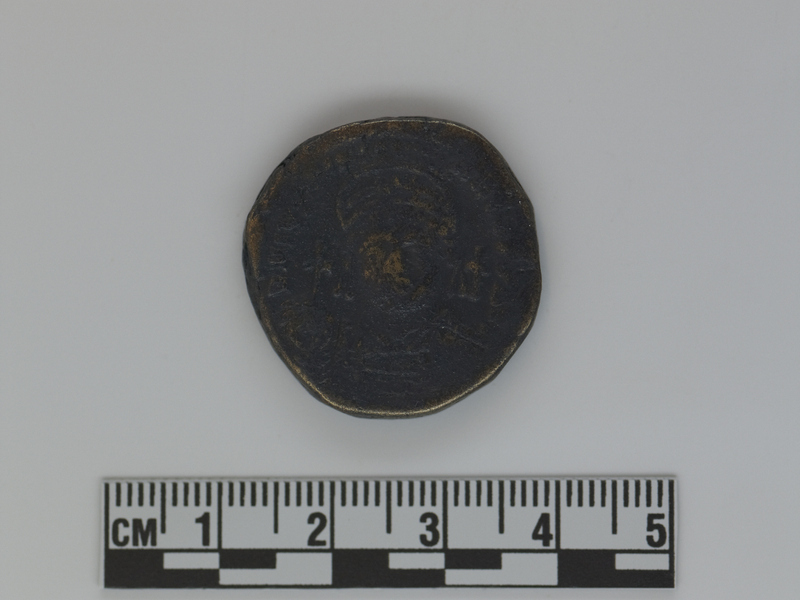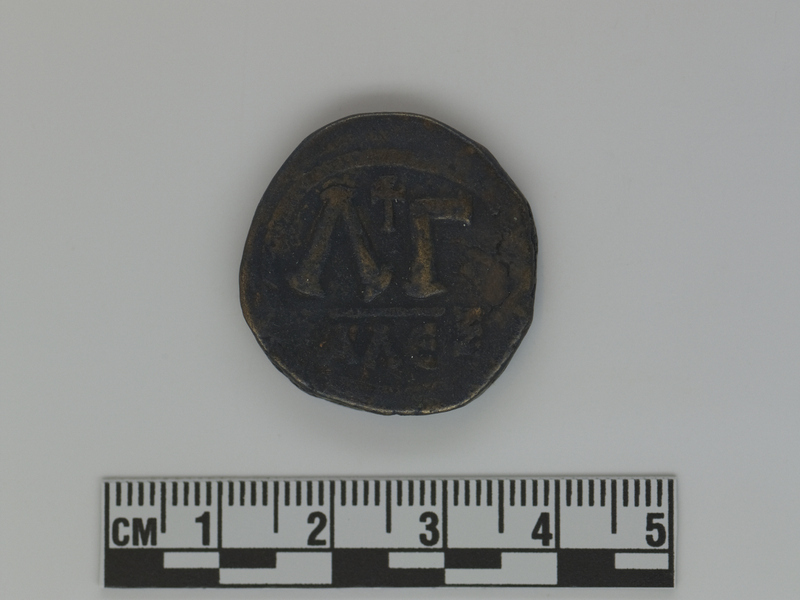Coin Item Number: 3095/203 from the MOA: University of British Columbia


Description
Byzantine coin of Justinian I, 527-565. Obverse: bust of Justinian I, facing forward, with diadem, cuirass, and helmet with plume; to left, he holds a globus cruciger; to right, he holds a shield; above shield, there is a cross; to left, inscription says ‘DNIVS[TINI]’; to right, ‘ANV[S]P[P]AV’. Reverse: large 'ΛΓ'; above, a cross; in exergue, 'AΛEΞ'.
History Of Use
"33 Nummi" (denomination); DO# 273; Sear# 246. “DN IVSTINIANVS PPAVG” extends to “Dominus Noster Justinianus Pius Perpetuus Augustus,” and translates to “Our Lord Justinian Pious Eternal August”. “AΛEΞ” translates to "Mint: Alexandria". This type of coin, the follis, is a large bronze coin that was introduced by the Emperor Anastasius in 498, marking a large departure from the Roman system of coinage inherited by the Byzantine Empire. It was the model for bronze Byzantine coinage for 200 years, facilitating small-scale trade and commerce. Originally, the basic follis in Constantinople was a heavy coin worth 40 nummia, with smaller follis parts equaling 20, 10, or 5 nummia. When the coin was debased and made lighter the value of it would decrease. The 33 nummia coin was a special denomination only minted in Alexandria and only circulated in Egypt.
Iconographic Meaning
The face of the emperor on coins was a symbol of his authority. Justinian I is depicted forward facing on this coin, emphasizing the station of the emperor over the person of Justinian himself. His cuirass, helmet and shield symbolize his military role, and the globus cruciger signifies the heavenly basis of Imperial rule. These symbols combined portray the emperor as a holy Christian warrior.
Item History
- Made in Alexandria, Egypt between 538 and 565
- Owned by David Herman before February 2, 2015
- Received from David Herman (Donor) on February 2, 2015
What
- Name
- Coin
- Identification Number
- 3095/203
- Type of Item
- coin
- Material
- bronze metal
- Overall
- height 0.3 cm, diameter 2.7 cm
Who
- Culture
- Byzantine
- Previous Owner
- David Herman
- Received from
- David Herman (Donor)
Where
- Holding Institution
- MOA: University of British Columbia
- Made in
- Alexandria, Egypt
When
- Creation Date
- between 538 and 565
- Ownership Date
- before February 2, 2015
- Acquisition Date
- on February 2, 2015
Other
- Item Classes
- metalwork
- Condition
- good
- Accession Number
- 3095/0203